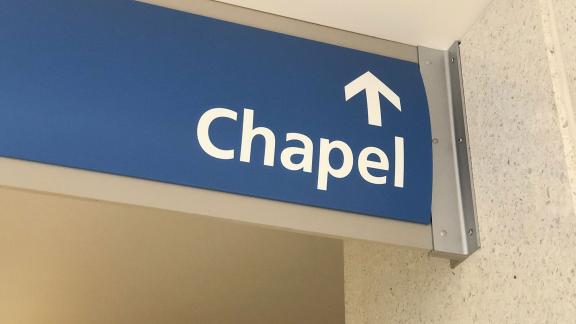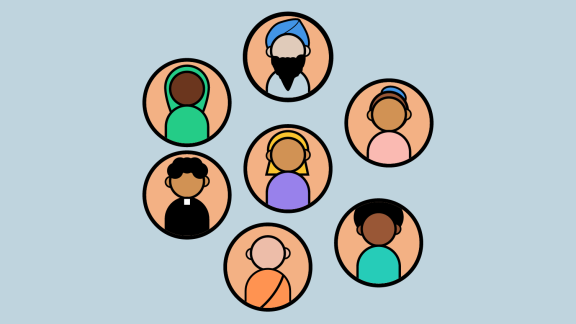Hidden in plain sight

I have a disability and a history degree, but you don’t need either of these to know that the most iconic hero in British history was disabled. He stands on his column in Trafalgar Square with the result of two “occupational injuries” – the lack of an arm and blind in one eye – proudly displayed, as they are in all his portraits.
Our history is full of disabled heroes, known for their achievements and not defined by their disability.
Down at the other end of Whitehall is the statue to Winston Churchill, rarely recognised as disabled, but who suffered from a recurrent depressive condition that he described as his “black dog”. Unlike Nelson, Churchill’s disability was invisible and often glossed over, so you can’t blame the sculptor for not capturing it.
Head 150 miles north-west and you find a statue that, remarkably, conveys no hint of another hero’s disability. In Stoke on Trent, outside the Wedgwood Museum, stands a statue of Josiah Wedgwood, possibly one of the greatest figures of the Industrial Revolution: entrepreneur, inventor, innovator, radical and anti-slave trade campaigner. Wedgwood had his lower leg amputated because of smallpox contracted as a child. The fact that contemporary portraits do not show his prosthesis may reflect a desire on his part conceal his disability. But his disability meant that he couldn’t turn a kick wheel and follow the family trade as a potter himself, so directed his attention and his prodigious talent to reshaping the industry he worked in.
Disabled people don’t want to be defined by their disability. However, we do hope people make “reasonable adjustment” (to use the words enshrined in the 2010 Equality Act) to help us mitigate our disability so we can achieve and contribute to the best of our ability. For some of my colleagues in the Disabled NHS Directors’ Network (DNDN), it is a matter of ensuring that there is decent physical access in the shape of ramps and lifts. For others, it involves thinking carefully about lighting, legibility and document suitability for text to speech solutions. At the DNDN, we adopt the discipline of checking at the start of any meeting if anyone requires any adjustment.
For me, it is relatively easy. My hearing is impaired by tinnitus, taking the form of a high-pitched ringing or screeching that means that I can’t hear sibilants and hard consonants even with my hearing aids. It is genetic rather than the result of having played in a rock band, and I slightly resent that the tinnitus also experienced by my father and brother, both of whom served in the armed forces, generated an adjustment to their service pensions (paid out of my taxes) because it was diagnosed as the result of exposure to gunfire.
It helps if I can see your mouth when you speak (which means colleagues dropping their Covid masks when speaking and allowing me to choose where I sit in a meeting). In the endless round of Teams meetings, it helps if you turn your cameras on and the closed captioning facility is enabled. It also helps if you don’t mind me occasionally asking you to repeat what you have said as it is much safer than me having to guess. And finally, please don’t ask me to engage in a mindfulness session that involves sitting silently: I don’t hear silence and this sort of mindfulness session leaves me tormented by my tinnitus!
Kate Smyth, (non-executive director at Lancashire Teaching Hospitals Foundation Trust) and I established the Disabled NHS Directors’ Network in 2019 with multiple objectives. Not only did we want to provide mutual support and share experiences among NHS leaders with disabilities, but we wanted to support disabled people throughout the NHS, providing role models from people at board level to junior colleagues, increasing the representation of disabled people on boards, and raising standard of service provided to patients and services users with disabilities.
It has been an exciting time building the network, discovering colleagues with a very wide range of disabilities: sensory like mine, physically disabling, like those of Kate who is a wheelchair user as a result of multiple sclerosis, and her co-chair, Peter Reading (chief executive at North Lincolnshire and Goole Foundation Trust) who had polio as an infant, or relating to long-term mental health or neurodiversity. It is also exciting that the NHS is at last “getting” disability as it feels that, for too long, it has been the poor relation among the Equality Act protected characteristics.
And, finally, as someone who spent the winter 1976/7 (ancient history for most people reading this) studying the life and career of Josiah Wedgwood, it is also exciting to have the excuse of Disability History month to celebrate one of Britain’s disabled heroes.



